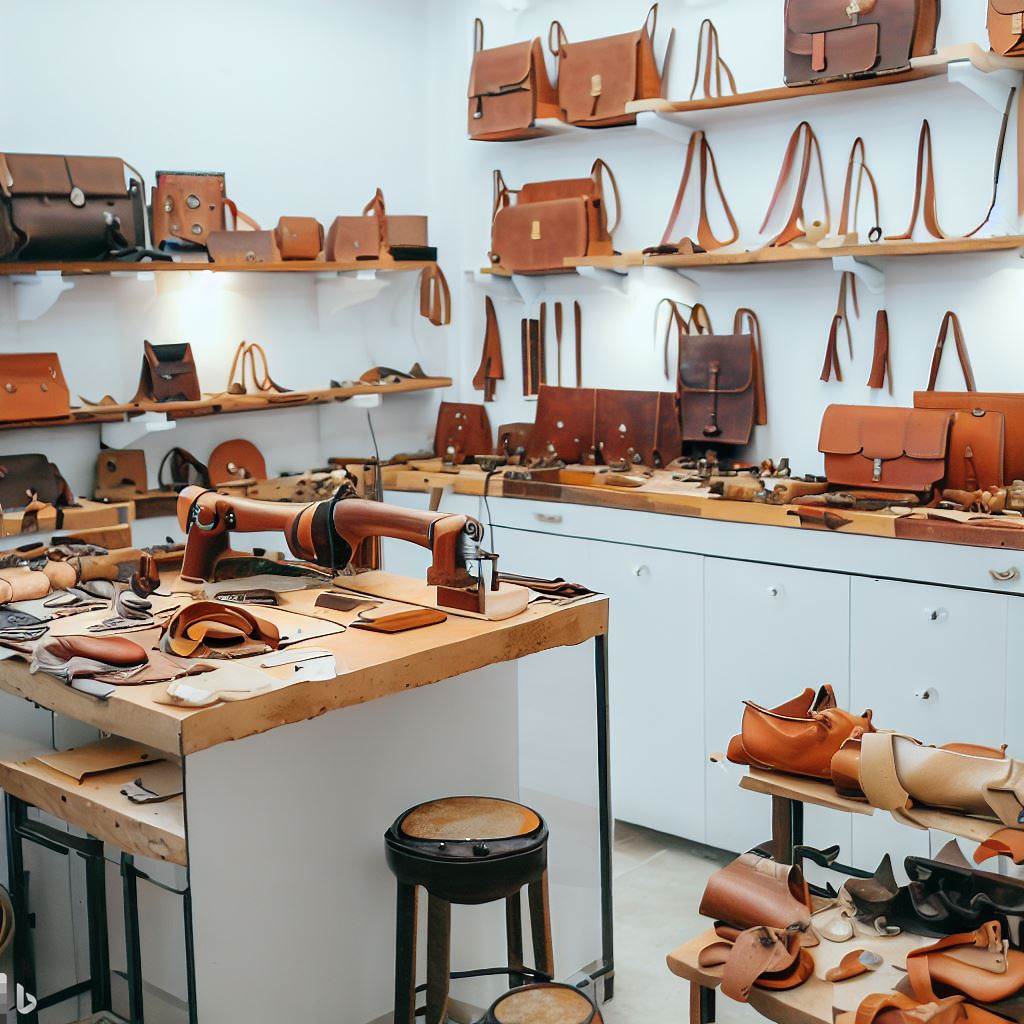Leatherworking and Culture: Exploring Heritage through Craft
Encoding Cultural Memory in Leather Motifs
Leatherworking frequently encodes heritage by incorporating meaningful motifs and symbols reflecting a group’s cosmology, values, history and shared identity into artistic creations and accessories.
For example, Celtic knots reference eternity, pathways, and connection in Irish leatherwork. Chinese dragons represent benevolence and protection. Day of the Dead skulls signify honor and remembrance in Mexican leathercraft. Meaning resonates through every line and curve tool.
By reviving sacred imagery and folklore narratives through leather, artisans sustain generational bonds and knowledge. Their works silently communicate cultural traditions to those in the know.
Teaching Traditional Techniques to Youth
Many leatherworkers consider teaching young generations ancestral tanning methods and artistic styles a cultural duty vital to heritage preservation. Their patience invests in future pride.
Classes often take place in natural settings, learning techniques sourced from the land. Children progress through entire processes from tanning to tooling to instill holistic understanding. Guidance ensures important context gets absorbed alongside skill.
This peer tutelage provides kids meaningful connection to community identity and elders. Training flexible young hands and minds protects precious knowledge from fading away when elders pass on. Each lesson laces another strand in lineage ropes.
Collaborative Community Artworks
Leather workshops frequently bring groups together to cooperatively design and construct large community art pieces combining input from many hands of all ages into unified emblems of shared values and experience.
Color squares get individually hand tooled by each participant then stitched together into vibrant quilts depicting heritage symbols. Story circles inspire Multi-generational teams to co-create pictorial cultural chronicles in leather mosaic. Pueblo groups cowhide masks for ritual dances requiring elaborate collaboration.
The participatory public process weaves together voices through contributed patches into jaw-dropping synergistic works reflecting collective cultural soul. Leathercraft becomes a communal rite reaffirming bonds.
Supporting Indigenous Entrepreneurship
Many talented leatherworkers within indigenous communities earn supplemental income through small cultural enterprises marketing handcrafted goods to a global audience interested in supporting artisanal traditions.
Online platforms like Etsy and Shopify empower remote sales and marketing. Partnerships with heritage organizations amplify visibility. Grants help artisans without business training navigate planning, accounting, and e-commerce.
The enterprises simultaneously sustain endangered crafts and families economically through marketplace demand for authenticity and quality. Culture and livelihood mutually support each other.
Tribal Markers on Clothing and Accessories
For indigenous peoples worldwide, leather clothing and accessories often incorporated special adornments, tools, or colors signifying tribal affiliations and kinships. Leather broadcast identity and status.
Elaborate beadwork patterns on moccasins and jackets identified specific First Nation lineages. Maasai warriors signaled manhood through dyed leathers. Batak chatelaines displayed ancestral carvings. Leather became a wearable family tree.
By encoding cultural information directly on garments, leathercraft historically fostered a profound sense of belonging and collective pride crucial for marginalized communities’ cohesion and resilience.
Animal Symbolism in Traditional Motifs
Across cultures, animal imagery holds deep mythic symbolism applied to leather goods as teachings, clan honors, and protective imagery. Specific creatures connote wisdom.
Owls marked Athenian leather wares as emblems of insightful goddess Athena. Chinese dragons blessed important documents. Egyptian vultures and crocodiles linked kings with the afterlife. Diné sheep signified fertility and guidance.
Leather motifs selected carefully from zoomorphic legends share sacred knowledge and moral lessons compactly through symbolic creature ambassadors honored by artisans. Their animal helpers live on through leather homages.
Memorializing Notable Ancestors
Leather goods present a resonant canvas for family to commemorate impactful departed elders. Portraits, names, and meaningful motifs inscribed onto leather celebrate legacies.
Wallets get embossed with grandparents’ silhouettes surrounded by their favorite flowers. Baby shoes honor those who nurtured little steps. Anniversary gifts cite leather as the traditional year. Remembrance permeates leather’s supple fibers.
By dedicating leather pieces to lore and loved ones who came before, their storied lives gain permanence woven into future generations’ own journeys. The thread of memory stretches forward, never broken.
Custom Designs Reflecting Recipients’ Heritage
For special gifts, artisans collaborate with recipients to create personalized items reflecting cherished cultural traditions meaningful to their heritage and family history. The pieces transcend transaction.
A bag crafted with aunties’ 1960s saris commemorates the generation who bravely emigrated to give family opportunity. A journal’s leather cover stamped with tribal symbols honors indigenous resilience. Items sanctify identity.
Leather’s earthy nature feels fitting to root present journeys in storied pasts through cherished inherited motifs remixed contemporarily. Heirlooms remind who we are by honoring where we came from.
Supporting Artisan Partners Globally
Mindful consumers increasingly seek artisanal leather goods that support master craftspeople worldwide through fair wages and welfare assistance so heritage trades provide sustainable livelihoods.
Some brands assist artisans with accessing education, healthcare, childcare, and legal resources in addition to paying above-market wages for quality goods. Others donate profits toward cultural preservation and community development.
By partnering equitably rather than exploiting leather arts for quick profit, ethical enterprises cultivate the wellbeing and dignity of global artisans while funding advancement of their traditions locally. The commerce becomes mutually nurturing.
Leather’s unique receptive surface invites stories and values of culture to emboss themselves upon it through devoted hands that shape more than just animal skin but collective memory and imagination. Across communities worldwide, leather rites of passage, coming of age rituals and mythic motos bind generations in purpose. The sacred knowledge survives each age reinterpreted again through a people’s soul symbolically encoded onto durable leather.
